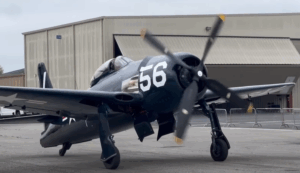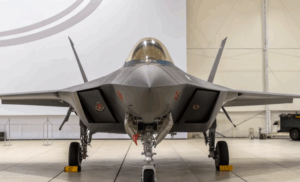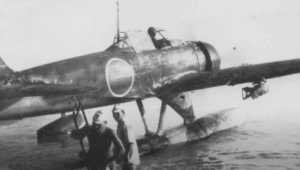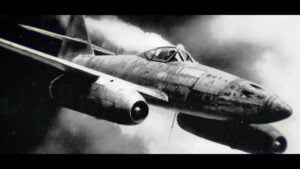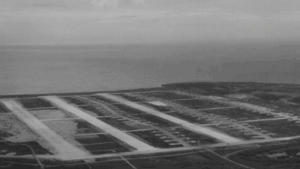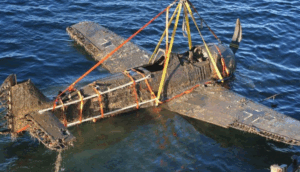The Plane That Unexpectedly Terrified German Fleets During WWII

Ed Nash's Military Matters / YouTube
At first glance, the aircraft climbing away from the Norwegian coast looked like a visitor from another time. With double wings extending from its sides and fabric skin rippling in the Arctic wind, it resembled something from the Great War. Yet this was no relic—this was the Fairey Albacore, the Royal Navy’s newest torpedo bomber during World War II. The biplane’s unassuming appearance masked its role in some of the most daring missions of the war, earning it a reputation that surprised even its fiercest critics.
The Fairey Albacore: A Modern Biplane

By the late 1930s, the Royal Navy’s Fleet Air Arm relied on the Fairey Swordfish, an effective but outdated aircraft. Recognizing the need for an upgrade, the British Air Ministry issued a call for a new torpedo bomber in 1937. This aircraft would need to carry an 18-inch torpedo, be equipped with a powered rear turret, and offer improved speed and crew comfort for long missions over cold waters.
Fairey Aviation responded with the Albacore, which retained the familiar biplane structure for stability and ease of use but introduced several modern features. These included a semi-monocoque metal fuselage, foldable fabric-covered wings, and a fully enclosed cockpit with heating—a significant improvement over the open cockpit of the Swordfish. The aircraft was powered by a 1,100-horsepower Bristol Taurus engine, giving it a top speed of 160 miles per hour when armed with a torpedo. While faster and more advanced than the Swordfish, the Albacore’s heavier controls and other design limitations raised concerns among pilots and crew.
The Albacore first flew in December 1938, and production began shortly afterward. Though it represented an evolution in naval aviation, some of its design choices, like the separation of the pilot from the rest of the crew by the fuel tank, made communication challenging in high-pressure situations. Additionally, the rear crew had to climb through small fuselage hatches to enter, complicating emergency exits. Despite these drawbacks, the Albacore’s versatility and reliability would prove essential in the years to come.
Early Combat Operations

The Fairey Albacore entered service in March 1940 with No. 826 Naval Air Squadron, tasked with testing its capabilities in active combat. The squadron’s early missions included attacking road and rail targets in German-occupied Belgium and providing convoy protection in the English Channel. While these operations highlighted the aircraft’s strengths, such as its dive-bombing precision and stable low-speed handling for torpedo strikes, they also exposed its shortcomings. Pilots found the controls heavy and the enclosed cockpit uncomfortable due to uneven temperature distribution.
Despite mixed reviews, the Albacore continued to be deployed. By 1941, it had become the main torpedo bomber for the Fleet Air Arm, replacing the Swordfish on several carriers. Its most significant early challenge came during the Battle of Cape Matapan in the Mediterranean.
The Battle of Cape Matapan

In March 1941, British naval forces faced off against the Italian fleet in the Mediterranean. The Albacore played a critical role in this confrontation. On March 28, a group of Albacores launched from HMS Formidable to attack the Italian battleship Vittorio Veneto. While the initial strikes disrupted the Italian fleet’s formation, it was a second wave of Albacores that delivered decisive damage. Lieutenant-Commander John Dalyell-Stead piloted his Albacore to within 3,000 feet of Vittorio Veneto, releasing a torpedo that struck the battleship’s port side. Though Dalyell-Stead and his crew were shot down, their efforts crippled the battleship and slowed its retreat, enabling British forces to close in.
Later that evening, another wave of Albacores, alongside Swordfish aircraft, targeted the Italian cruiser Pola, rendering it immobile. This set the stage for a nighttime assault by British surface ships, which sank Pola and two other Italian cruisers. The Albacore’s contributions at Cape Matapan marked a turning point in the Mediterranean, weakening Italian naval power and demonstrating the aircraft’s effectiveness in coordinated strikes.
Arctic Missions and Operation EF

In July 1941, the Albacore faced its most challenging test in the Arctic. As part of Operation EF, a Royal Navy task force launched an attack on German-held ports in Norway and Finland to support the Soviet Union, Britain’s new ally. The Albacores operated from carriers HMS Victorious and HMS Furious, targeting ships and infrastructure in the Barents Sea. Flying in freezing temperatures and under constant threat from German anti-aircraft fire and fighter planes, the crews demonstrated remarkable resilience. Though losses were heavy, the missions disrupted German supply lines and showcased the Albacore’s ability to perform in harsh conditions.
Legacy of the Albacore
Despite its successes, the Fairey Albacore was gradually overshadowed by newer monoplanes like the Fairey Barracuda. However, its role in critical operations during World War II cemented its place in aviation history. The Albacore’s unassuming appearance and traditional design belied its impact, proving that even a biplane could adapt to the demands of modern warfare.














